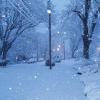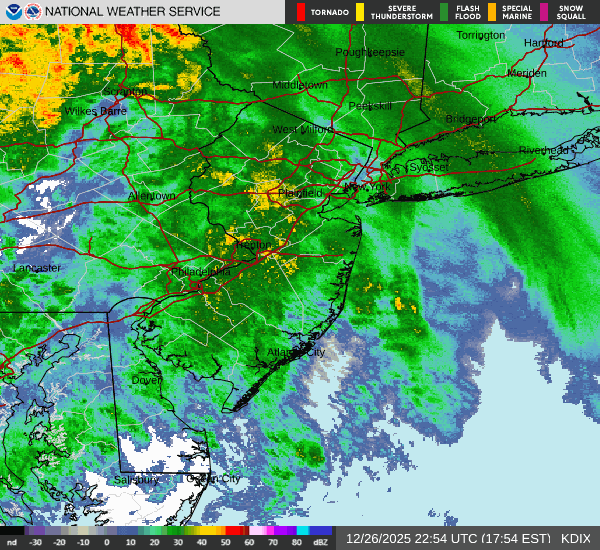All Activity
- Past hour
-
loud heavy sleet
-
The sleet line should wash out a bit if the heavy rates can persist for a while. Otherwise those getting sleet and not expecting it-that’s the problem with these systems that don’t come in with persistent heavy rates and these subsidence holes.
-
Same thing happened here. Was quite the drive home from work.
-
.thumb.png.991e09c19c25af7391ed569a205a5136.png)
Boxing Night Snow/Sleet/Ice Dec 26-27 Storm Thread/Obs.
Blue Dream replied to Mikeymac5306's topic in Philadelphia Region
That place is great -
(002).thumb.png.6e3d9d46bca5fe41aab7a74871dd8af8.png)
Boxing Night Snow/Sleet/Ice Dec 26-27 Storm Thread/Obs.
ChescoWx replied to Mikeymac5306's topic in Philadelphia Region
Technically freezing rain -

Wounded Duck Strikes Back: Dec 26 & 27th Winter Storm Obs
Damage In Tolland replied to WxWatcher007's topic in New England
Estimating about 7:15 here 19.6 /7.5 -

26th-27th event, coming at us like a wounded duck.
dendrite replied to Go Kart Mozart's topic in New England
Bump NE -
That band is narrow, but moving slowly east. If it stalls someone just to the east will get clobbered. Snow is much lighter here now. 22/19
-
Already have a dusting as I am about to drive home from work
-
Good luck with obtaining Lamar when your team owes Tua like 54 million next year, and no other team wants him. Lamar is having an injury riddled year, and his contract situation going forward is a major issue. IMO not many teams would be takers because their cap situation simply wont allow it. Maybe a team like the Raiders? Personally, I am neutral on Lamar at this point. Great talent when healthy but the Ravens need at least a partial rebuild, and not sure how they accomplish that with his contract situation going forward. The OL is atrocious and if they cant make significant improvements there then Lamar will end up like Burrow.. its already happening.
-
16 with heavy snow, about 3 inches OTG.
-

Boxing Night Snow/Sleet/Ice Dec 26-27 Storm Thread/Obs.
BBasile replied to Mikeymac5306's topic in Philadelphia Region
That sounds good. I may have to go for the same. Except I'll probably just DoorDash it and let another person take the risk. lol -

26th-27th event, coming at us like a wounded duck.
TauntonBlizzard2013 replied to Go Kart Mozart's topic in New England
Euro? -
Monster dry slot in WNY. It looks even more prominent than the NAM/HRRR were depicting at 18z. That will probably clip us later tonight and hopefully fill in somewhat.
-
Moderate snow in North Caldwell ~520 elevation. Heavy dbz moving east from Morris County to my area then to NYC
-

26th-27th event, coming at us like a wounded duck.
dendrite replied to Go Kart Mozart's topic in New England
-
Mostly snow here by the outerbridge now
-

Wounded Duck Strikes Back: Dec 26 & 27th Winter Storm Obs
Sey-Mour Snow replied to WxWatcher007's topic in New England
You can see that slight SSE trajectory as it moves east.. this will keep the heaviest banding over us.. -
Western Putnam: Sleet and snow grains. Vis 1 mi. 2.5" on the ground. Initial burst of snow lasted about 1.5 hours.
-

Wounded Duck Strikes Back: Dec 26 & 27th Winter Storm Obs
weatherwiz replied to WxWatcher007's topic in New England
should be close to go time here -
I've been lurking around those fourms lately. Ours is by far the best. We have so many colorful personality here. The humor in here is super underrated and our top poster are world class mets imo.
-

26th-27th event, coming at us like a wounded duck.
Damage In Tolland replied to Go Kart Mozart's topic in New England
Russian? -
Wounded Duck Strikes Back: Dec 26 & 27th Winter Storm Obs
Go Kart Mozart replied to WxWatcher007's topic in New England
Pound Town. -

Boxing Night Snow/Sleet/Ice Dec 26-27 Storm Thread/Obs.
The Iceman replied to Mikeymac5306's topic in Philadelphia Region
Roads aren’t bad at all. I’m about to go get Thai in Penndel, will report back -
14 car accident on 140 due to ice in Westminster MD














